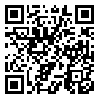Volume 15, Issue 5 (2024)
LRR 2024, 15(5): 283-311 |
Back to browse issues page
Download citation:
BibTeX | RIS | EndNote | Medlars | ProCite | Reference Manager | RefWorks
Send citation to:



BibTeX | RIS | EndNote | Medlars | ProCite | Reference Manager | RefWorks
Send citation to:
Zou R, Dechsubha T, Wang Y. Mapping the Semiotic Landscape in Education: Language, Multimodality, and Educational Transformation. LRR 2024; 15 (5) :283-311
URL: http://lrr.modares.ac.ir/article-14-74802-en.html
URL: http://lrr.modares.ac.ir/article-14-74802-en.html
Mapping the Semiotic Landscape in Education: Language, Multimodality, and Educational Transformation
1- Academy of Arts and Philosophy, Shinawatra University, Bangkok, Thailand , michelleqls@163.com
2- Academy of Arts and Philosophy, Shinawatra University, Bangkok, Thailand
3- School of Foreign Languages and Cultures, Nanjing Normal University, China
2- Academy of Arts and Philosophy, Shinawatra University, Bangkok, Thailand
3- School of Foreign Languages and Cultures, Nanjing Normal University, China
Abstract: (2160 Views)
This bibliometric analysis explores the integration of semiotics within educational contexts, highlighting a transformative shift towards multifaceted understandings of knowledge construction through language, multimodality, and educational transformation. Drawing on 1823 publications from the Web of Science database, this study employs both co-citation and co-word analysis to reveal prevalent themes and keywords in the field of semiotics in education. The co-citation analysis highlights the evolution of semiotic theories and their application in educational practices, from foundational concepts introduced by pioneers such as Saussure and Peirce to modern interpretations that consider the impact of digital technologies on semiotic resources. Co-word analysis, on the other hand, uncovers key research topics such as multimodality, multiliteracies, and the role of technology in mediating semiotic learning processes. This investigation is novel in its comprehensive approach to mapping the semiotic landscape in education through bibliometric methods, offering insights into how semiotic theories shape educational practices and outcomes, especially in language teaching and learning. By synthesizing findings from diverse research clusters, this study emphasizes the importance of adopting a multidisciplinary approach to understand the dynamic interaction between semiotics, technology, and learning. It contributes to advancing educational research by highlighting the transformative potential of semiotics in crafting more engaging, inclusive, and effective learning environments in the digital era.
Keywords: semiotics, education, language, Saussure, Peirce, multimodality, educational transformation, bibliometric analysis, Web of Science
Send email to the article author
| Rights and permissions | |
 |
This work is licensed under a Creative Commons Attribution-NonCommercial 4.0 International License. |








